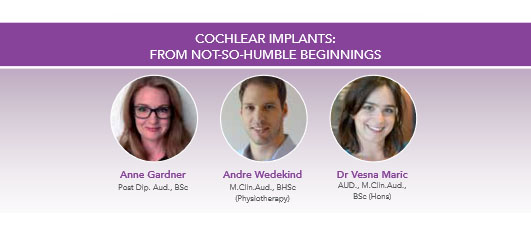
From their inception, cochlear implants have paved the way in user benefits and innovation. Thirty years ago, remarkably, they provided hearing to those with severe and profound hearing loss for rudimentary speech recognition in quiet settings, especially in addition to lip-reading.
Outcomes: Average sentence understanding with modern cochlear implants in quiet without lip-reading exceeds 80%. With successive improvements in implant design, surgical techniques and external sound processing, we have seen steady improvements in performance and a huge expansion of criteria for implantation towards better residual hearing. Today, those with excellent low frequency hearing are readily implanted using atraumatic hearing preservation surgery and provided with specifically designed hybrid hearing aid and cochlear implant (EAS) devices. These recipients attain highest scores in background noise tests (image courtesy of MedEL).
Usability: Cochlear implant and hearing aid manufacturers have teamed to improve the comfort of listening and performance in noise. We see automatic spatial zooming to the dominant speech signal when noise exceeds a predefined level. We also see the automatic cancellation of wind caused turbulence and selective noise reduction algorithms applied to situations such as cafés, large crowds and music. Over the last 3 years, recipients have been able to wear their devices while swimming, increasing usability significantly, especially for children attending swimming lessons.
One of the most influential recent advancements is direct streaming from a smart device. This means improved phone and digital world access with unprecedented opportunities for auditory rehabilitation using podcasts and smartphone applications.
Clinical Implications: Since the late 1990s, audiologists have been able to use objective measurements of the auditory nerve’s response to electrical stimulation through the implant. Nowadays, it is used routinely during surgery to test auditory nerve integrity and to facilitate programming in infants and others who are not able to provide subjective responses needed for adjusting the implant system.
Currently, the most advanced electrophysiological measures provide cortical responses evoked by sound in cochlear implant recipients. This gives us additional objective data for programming, as well as invaluable insights into the role of higher order auditory structures in recipients’ speech understanding.
